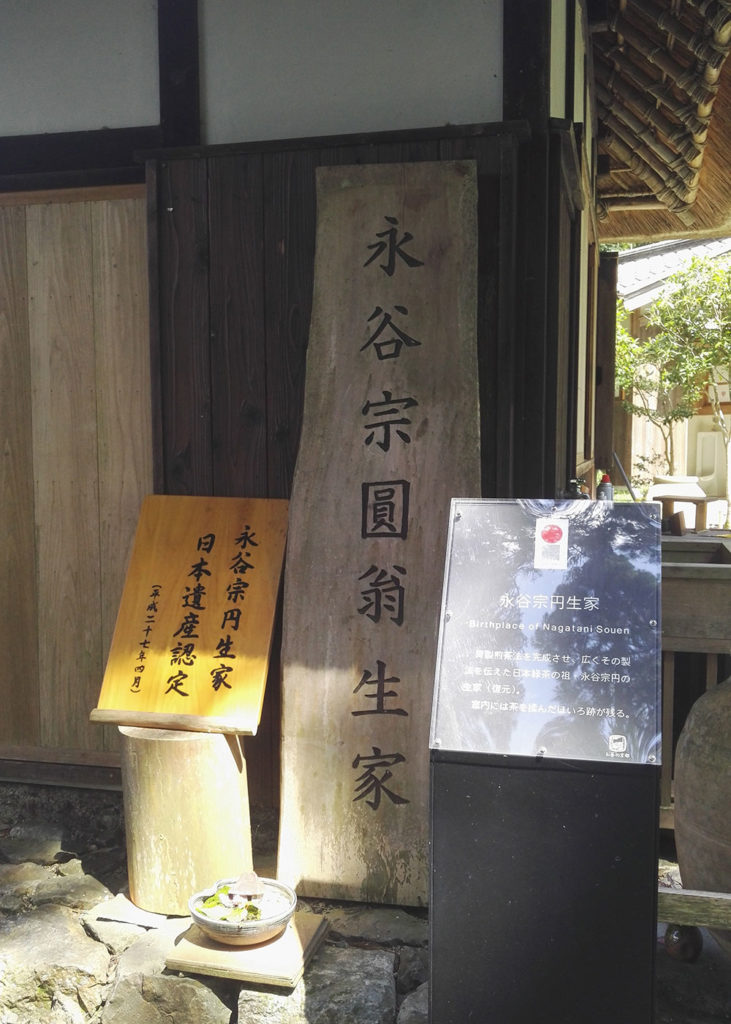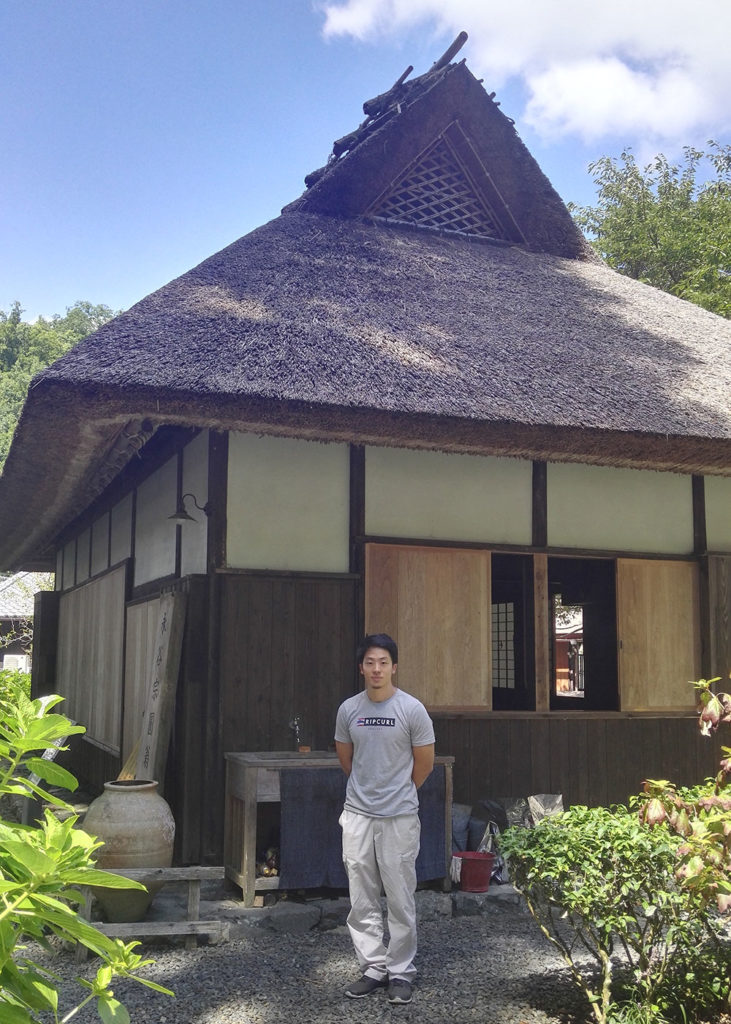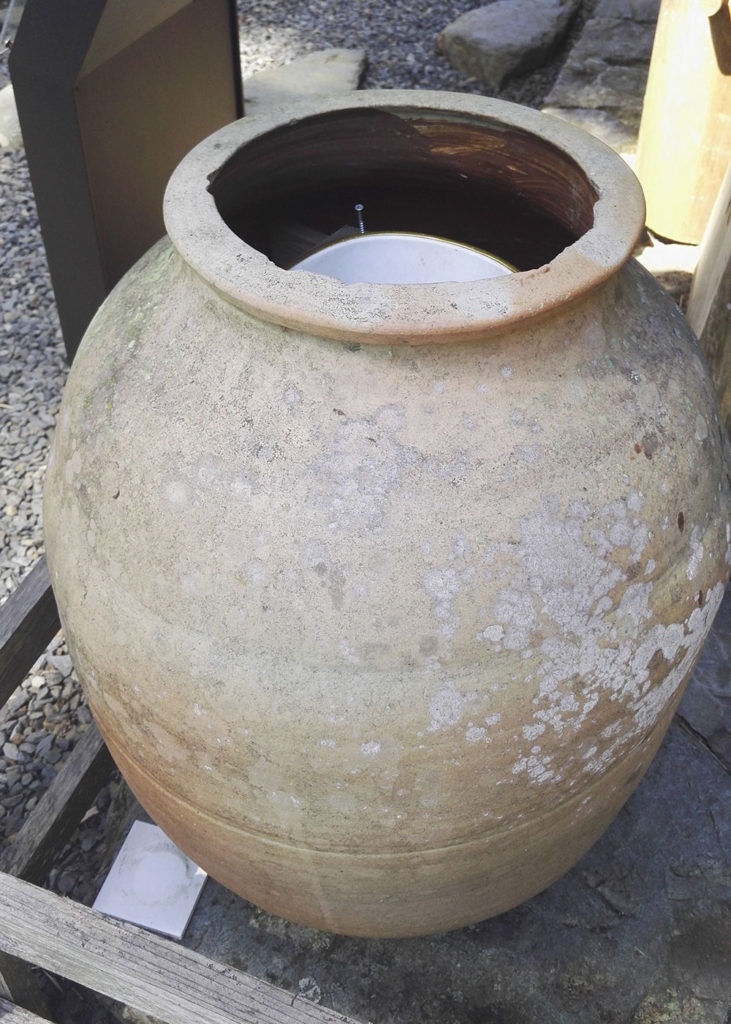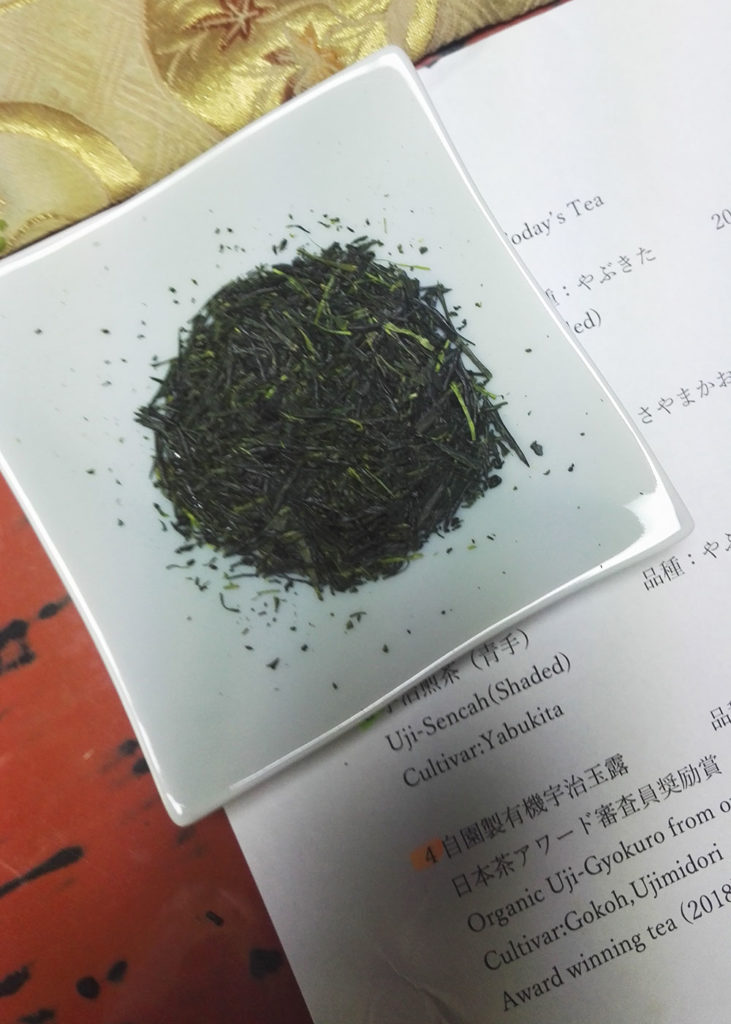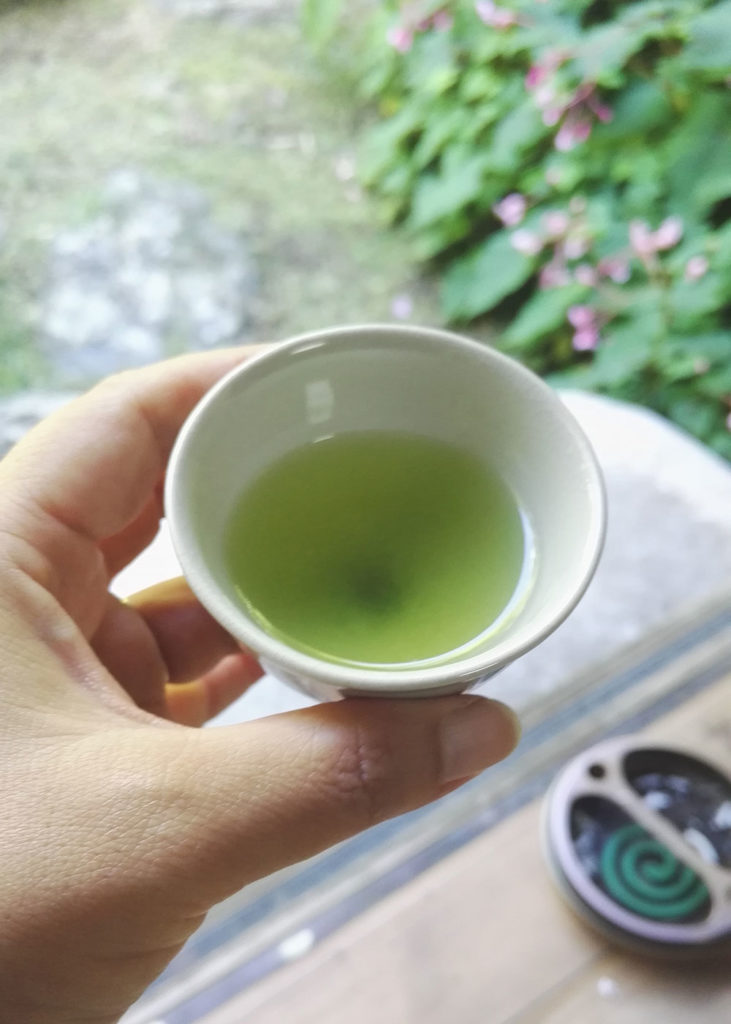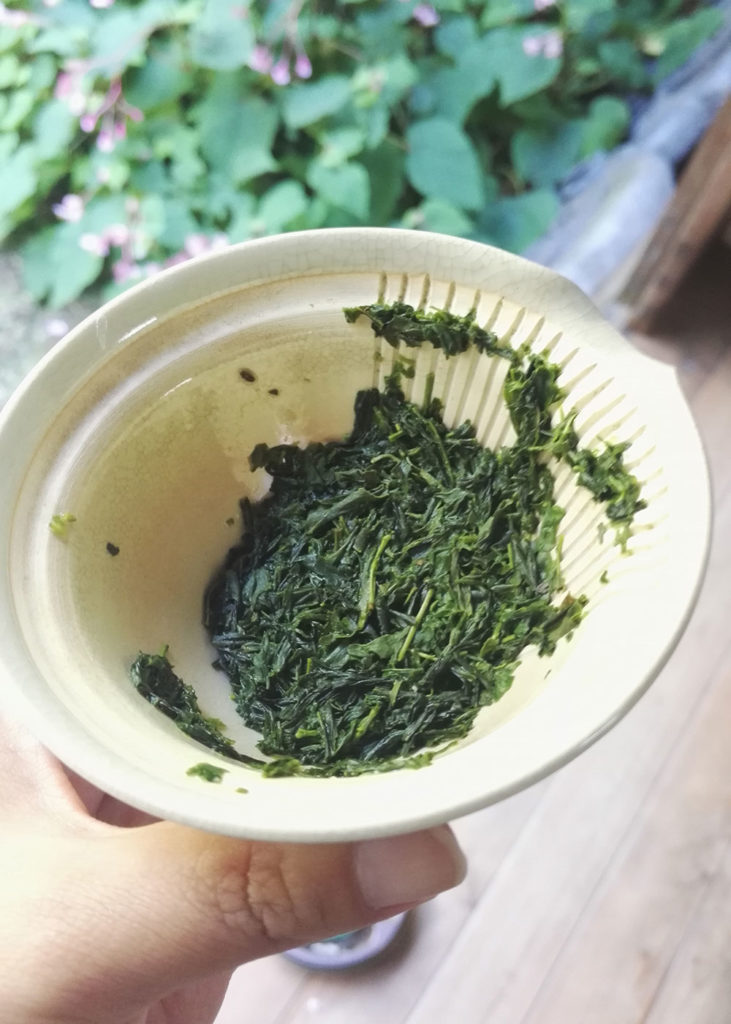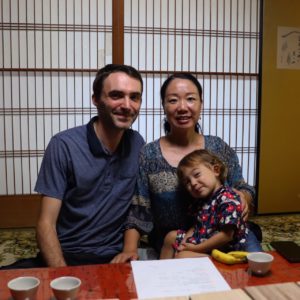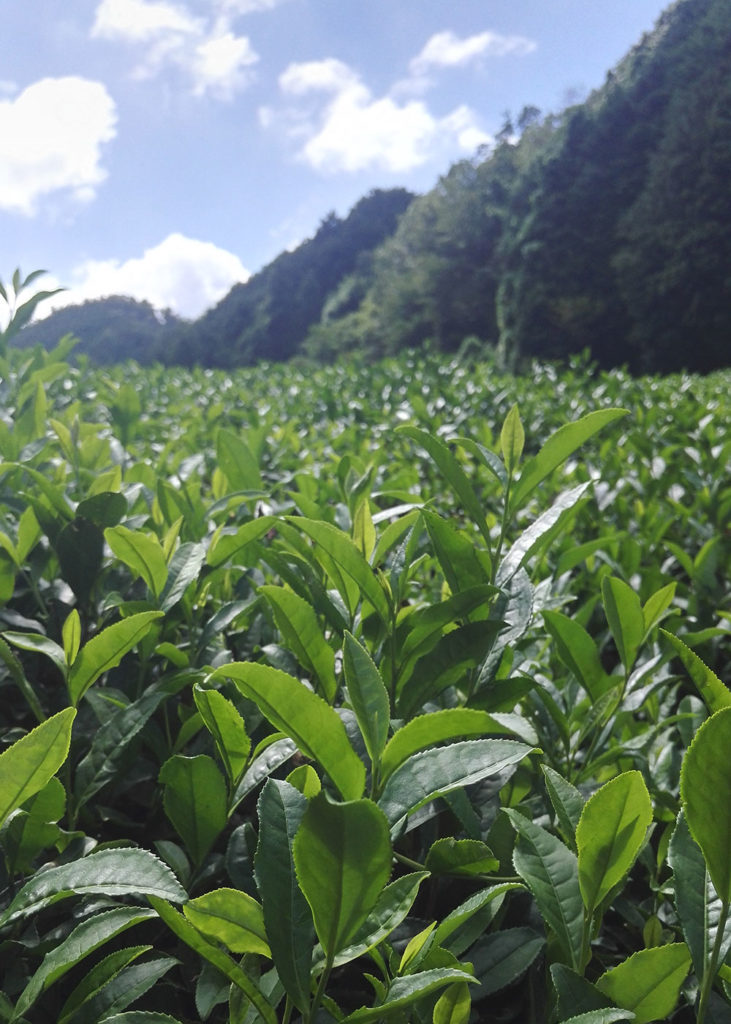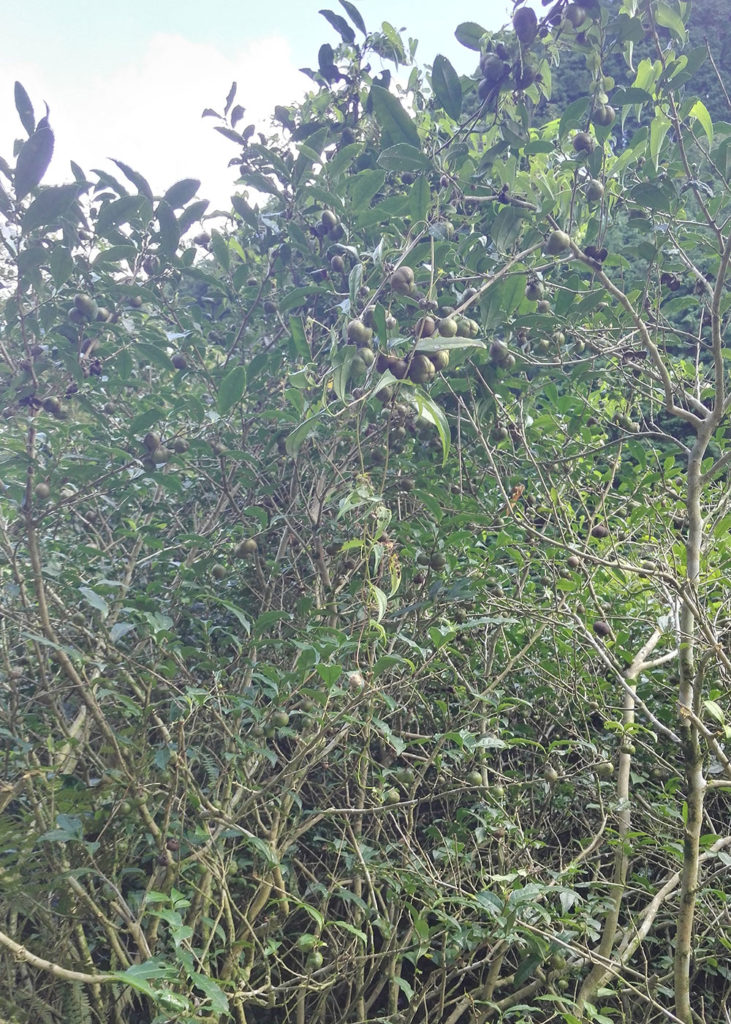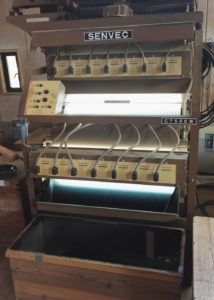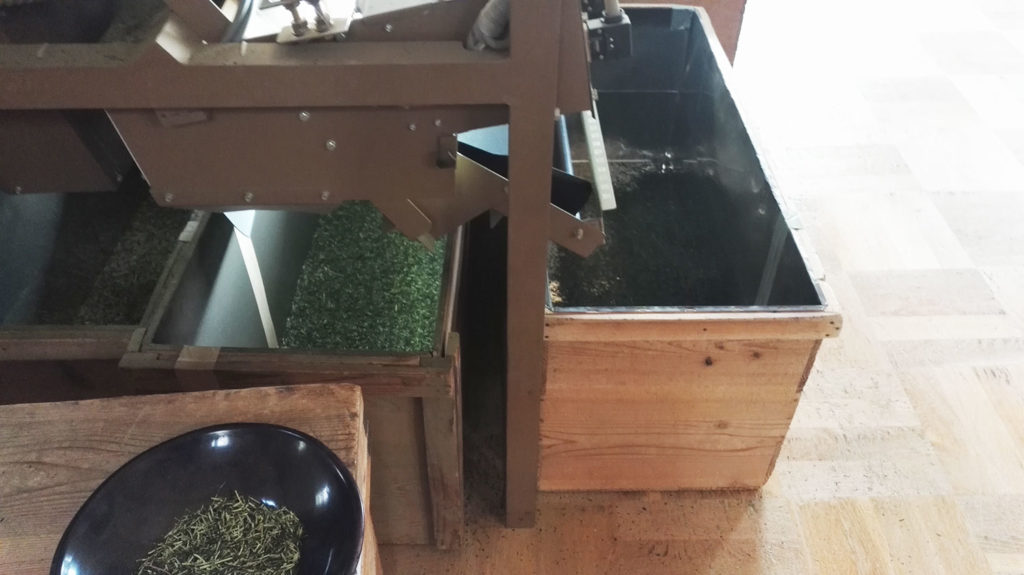Visiting Nagatani tea factory in Uji Kyoto Japan was one of the highlights of my holiday in Japan this year. I love Japanese green tea and wanted to learn more so I contacted Nagatani tea factory. They were very welcoming and found a beautiful Gyokuro tea.
Japanese green tea ‘Sencha’ was established in the same place by Nagatani Souen in 1738. He took 15 years to achieve the perfect green tea which remains fresh green and tea water does not become brown when brewed. Because before this time, the quality of Japanese green teas were low and they were using Chinese method and processed by pan-frying or oven bake the leaves to stop the oxidation. The name of place is called Ujitawara of Uji Kyoto Japan and has perfect conditions to grow high quality tea due to the right amount of rain (about 1500ml per year), rich soil, clear water coming from the two rivers and foggy mountain weather which prevents frosts on leaves. Nagatani Souen established the fundamental of Japanese green tea and taught the method to others, instead of keeping it for his farm only. His tea were sold only in Edo (the capital) in the beginning but the tea farmers all over Japan started to adopt his method gradually. Notwithstanding, every generation made effort to make better tea each day.
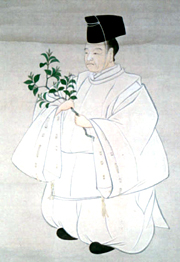
Nagatani tea farm is one of them and I could see their commitment to their tea making. Nagatani tea farm is a family own company which specialises in Gyokuro and premium Sencha and Matcha. They do both growing tea and finishing off the tea. We were welcomed by Yuta san who is 25 years old and following the footsteps of tea making of his ancestors. This farm and factory is run by 3 generation – grandfather, father and grandson. Yuta san let us taste 3 kinds of Sencha and 3 kinds of Gyokuro. We felt very welcome and his mother and all his family were so generous too and gave us some sweets plus my daughter got banana too! The tea wares they were using were also nice to drink their beautiful tea.
After the tea tasting, Yuta san drove us to his tea farm. This place is also known as historical place during Edo period. Since their tea farm is located in the lower part of mountains and there is no residential area above, the clear water runs to the river which is important fact to grow high quality tea. It was a unique experience seeing the tea plants close by. There was a part of tea plants which were taken care of and there was a small part with abandoned tea plants (obviously they don’t make tea out of these plants). The abandoned tea plants had even fruits and looked so different from the others. I could see lots of effort to grow high quality tea and they are still trying to make better tea each year. In fact one of their Gyokuro tea (Cultivar 50% Gokoh and 50% Ujimidori) won the award of Japanese best tea in 2018. Gyokuro is the name of Japanese green tea and is the highest grade and most precious tea in Japan which is often gifted to the emperors and royal family since Edo period. In his farm, they have tea plants exclusive for Gyokuro tea which they use only the top part of tea plant every year. They harvest the first tip which come out each year only once, so you can imagine how much nutrients the teas have. Usually the other part of tea plants are used to make other kind of teas so this makes it even more precious. Since the teas are covered for 25 days before harvest, a lot of L-theanine (amino acid) remains in the leaves which brings out sweet umami flavour and very little astringency. If you serch L-theanine you will see the health benefits but it is a calming agent which relaxes your body and mind, releases stress, improve focus and improve the quality of sleep.
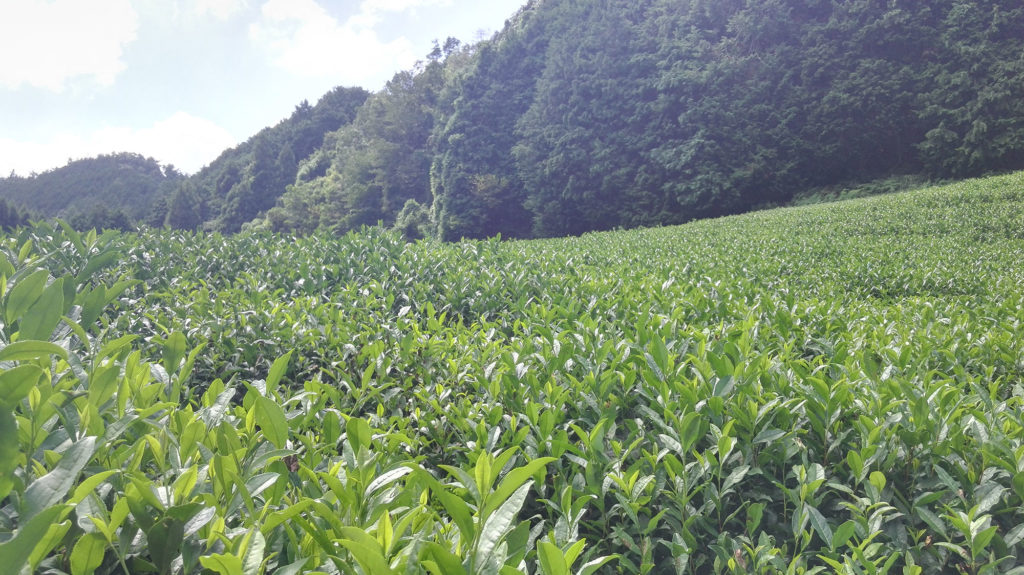

Then we were taken to their factory where the tea is processed. I saw the fresh sencha tea which has just been steamed and being processed. The steaming process including drying while rolling afterwards is the method Nagatani Souen invented in order to stop the oxidation of green teas and it is called ‘Aosei Sencha Seihou (青製煎茶製法)’. When green tea is oxidised, they will loose everything – flavour and nutrients so this is very important process. These tea leaves go to several machines to become finished teas. First the leaves are separated by weight – heavier tea leaf has more value because it contains more water in the tea. Then it will be separated from leaves to stem to divide two different kinds of teas (Sencha or Stem tea). The machine has some sort of sensor which recognises the colour so they divide darker colour for leaves and lighter colour for stems. There was also another machine to give tea with a bit of smokey flavour.
Through this visit and tasting, we’ve decided to get a few award winning Gyokuro (cultivar is 50% Gokoh and 50% Ujimidori) to share with you in Europe!! Best way to brew this Gyokuro tea is in a tea pot with 50 degrees water for longer steeping time such as 2 minutes. If you don’t own a teapot use a jug or measuring cup so leaves have enough space to open up. This tea is grown without pesticides and chemical fertiliser. You can keep the leaves after brewing and eat it with rice and salad too.
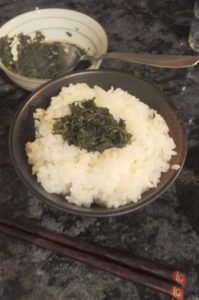
This is one example to eat used Gyokuro tea. If you want to eat it alone, you can but I made a dressing with honey, light soy sauce and rice vinegar (1 table spoon each) and added grated sesame seeds plus a bit of sesame oil. You can also add Tahini.
Buy award-winning Gyokuro tea from here.
I hadn’t written an article here for 1 year!! I am more active on our facebook page and Instagram so don’t forget to follow me!
